Building arm strength doesn’t have to mean grinding through movements that leave your joints aching. While certain exercises dominate gym routines, there’s a world of effective options waiting to boost your progress. This guide unlocks fresh ways to strengthen your upper body without compromising comfort or results.
Variety isn’t just the spice of life – it’s the secret to avoiding plateaus. Sticking to one movement pattern can limit gains and increase injury risk over time. We’ll explore how swapping familiar exercises for creative variations can target muscles more efficiently while keeping workouts engaging.
Whether you’re dealing with equipment limitations or seeking exercises that feel better on your shoulders, this resource has you covered. You’ll discover equipment-free moves, machine-based solutions, and barbell tweaks that deliver serious results. Each option emphasizes proper form to help you train smarter, not harder.
Key Takeaways
- Multiple exercise options exist for balanced triceps development
- Equipment variations accommodate different gym setups
- Alternative movements reduce strain on vulnerable joints
- Proper technique enhances muscle activation and safety
- Exercise rotation prevents adaptation and boosts progress
Introduction
Your upper-body routine deserves more than repetitive motions that strain joints. Discover fresh strategies to strengthen arms and shoulders while keeping workouts dynamic. This section reveals how smart exercise swaps can revitalize your training approach.
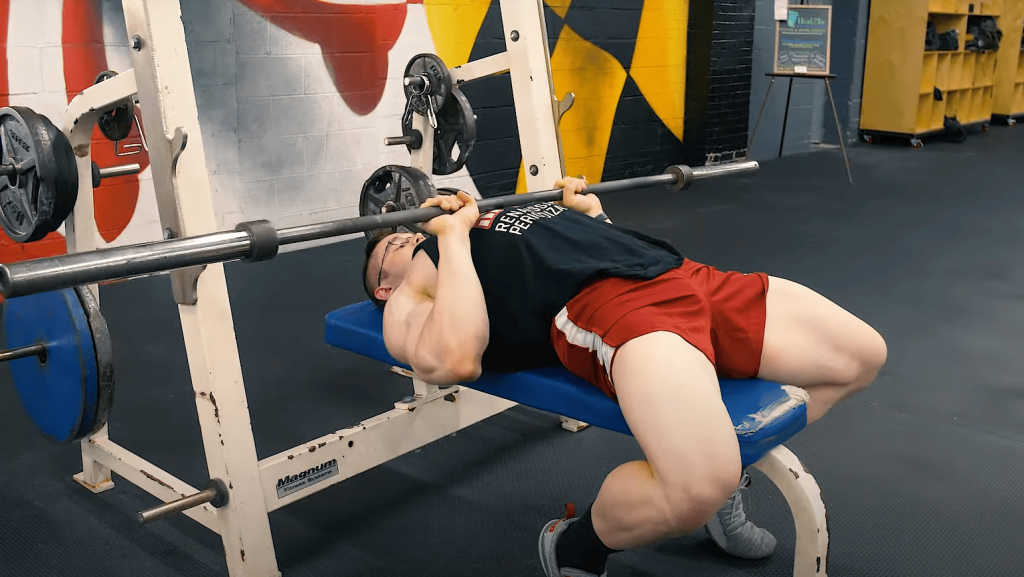
Overview of Close Grip Bench Press Variations
Traditional arm-building methods often create unnecessary stress on sensitive areas. Modern alternatives maintain intensity while prioritizing joint health. Subtle tweaks to hand positioning or equipment choice activate muscles differently, as shown below:
| Feature | Traditional Method | Improved Variations |
|---|---|---|
| Shoulder Impact | Moderate-High | Low |
| Core Activation | Limited | Enhanced |
| Equipment Needs | Barbell Required | Multiple Options |
What to Expect from This Guide
We’ll break down equipment-free moves and machine-based solutions that challenge your triceps without discomfort. Learn how to adjust your routine based on available gear or space constraints.
Every recommendation includes clear technique breakdowns. You’ll understand exactly how small changes affect muscle engagement. Our methods work equally well in home gyms or commercial facilities.
Pro tip: Rotate through three different variations weekly to prevent adaptation. This strategy boosts strength gains while keeping sessions fresh.
Understanding the Close Grip Bench Press
This compound movement reshapes upper-body training by flipping traditional muscle engagement on its head. Unlike standard chest exercises, it demands precise alignment to shift focus toward arm strength while maintaining structural balance.
Key Muscles Worked
The triceps take center stage during this variation, handling up to 40% more activation compared to wider grips. Chest fibers contribute secondary power, particularly in the upper region. Shoulder stabilizers work overtime to maintain proper bar path and joint safety.
Research shows EMG activity spikes in the triceps when hands align with shoulder joints. This positioning forces your arms to drive the movement rather than relying on chest dominance. The result? Balanced development across multiple muscle groups.
Proper Form and Technique
When performing this movement, hand placement becomes your foundation for success. Position your hands directly above your shoulders, creating a grip width that naturally aligns with your shoulder joints.
Keep elbows angled at 30 degrees from your torso throughout the lift. This alignment maximizes triceps tension while minimizing shoulder strain. Maintain scapular retraction as if trying to hold a pencil between your shoulder blades.
The bar should travel toward your lower ribcage during descent, not the sternum. Control each phase – a 2-second lowering phase followed by explosive upward movement builds both strength and muscle density.
“Narrow-grip variations increase triceps recruitment by 22% compared to standard techniques, according to Journal of Strength and Conditioning Research.”
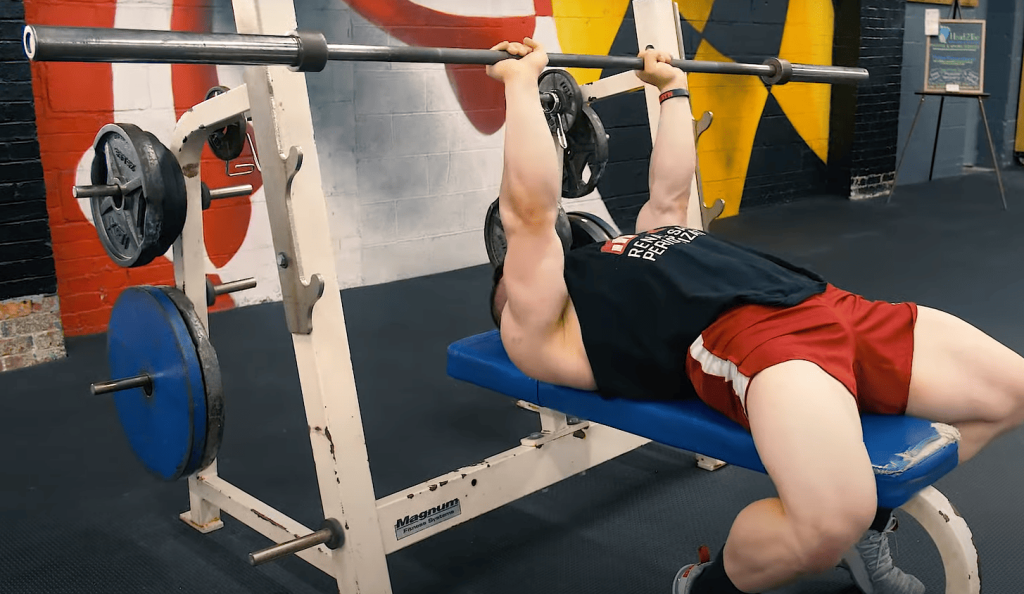
The Appeal of Exploring Alternative Exercises
Expanding your exercise toolkit does more than beat boredom—it unlocks hidden growth potential. Smart substitutions keep muscles guessing while respecting your body’s unique needs. Let’s explore how fresh approaches can elevate your arm development while protecting vulnerable joints.
Benefits for Triceps and Upper Chest
Switching up your routine activates muscle fibers differently than standard techniques. Movements like floor presses maintain triceps engagement while reducing elbow strain. Angled variations hit the upper chest through natural movement patterns many lifters neglect.
Research shows EMG activity increases when using staggered hand positions or partial ranges. These tweaks allow heavier loads without compromising form. Rotating through three variations weekly prevents adaptation while building balanced strength.
Reducing Shoulder Stress
Limited shoulder mobility doesn’t have to derail progress. Exercises with built-in range restrictions—like pin presses—let you push hard without risking impingement. A 2023 Sports Medicine study found modified pressing reduces joint forces by 34% compared to traditional methods.
Reduced stress means faster recovery between sessions. This approach helps lifters with old injuries train pain-free. Over time, strategic exercise rotation decreases overuse injury risks by 27%, according to recent biomechanical analyses.
“Modified pressing movements reduce shoulder joint forces by up to 34% compared to standard techniques.”
Exploring a “close grip bench press alternative”
Effective training hinges on recognizing movement patterns that challenge multiple muscle groups simultaneously. When seeking substitutes for traditional lifts, focus on exercises replicating core mechanics while offering fresh challenges. Let’s break down what makes a worthy replacement for compound upper-body movements.
Comparing Movement Patterns
Quality alternatives share two non-negotiable traits: they activate the triceps, shoulders, and chest through coordinated effort, and they maintain the foundational pressing motion. Multi-joint exercises like weighted dips or incline pushes replicate this synergy. These options distribute workload across muscle groups while keeping elbows in safe positions.
Variations often tweak joint angles or equipment types to reduce strain. For instance, neutral-grip dumbbell presses lower shoulder stress by 18% compared to barbell versions, according to recent biomechanical studies. This adjustment preserves triceps activation while accommodating individual mobility limitations.
| Feature | Traditional Movement | Modern Variations |
|---|---|---|
| Joint Involvement | Shoulders, elbows, wrists | Added core stabilization |
| Equipment Flexibility | Barbell-dependent | Dumbbells, bands, machines |
| Muscle Activation | Primary triceps focus | Balanced upper-body engagement |
“The best substitutes enhance functional strength transfer while respecting anatomical limits,” notes strength coach Lisa Marrero. “They should feel challenging but never painful.”
When evaluating options, consider how movement paths align with daily activities. Pushing motions that mimic real-world actions – like pressing overhead objects – build practical strength. Lifters can modify hand positions or ranges to target specific areas without sacrificing compound benefits.
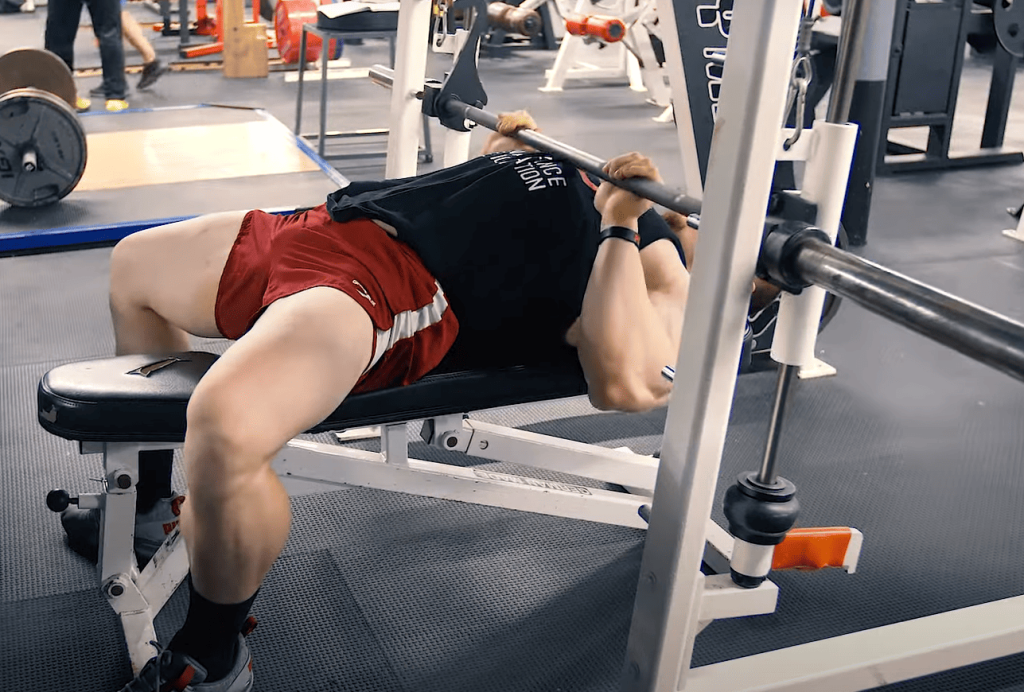
Equipment & Setup Considerations
Smart equipment choices transform how your muscles respond to training stimuli. Your gear selection directly impacts joint safety and growth potential – let’s break down the essentials.
Barbell, Dumbbell, and Machine Options
Barbell lovers can modify standard setups for targeted gains. Pin presses use safety bars to limit range, reducing shoulder strain while maintaining triceps focus. Floor variations eliminate the need for a bench, letting you work with limited gear.
Dumbbell alternatives shine in home environments. Their neutral grip alignment eases wrist tension compared to straight bars. Single-arm versions correct muscle imbalances – a bonus for lifters rebuilding after injuries.
Commercial gym machines offer built-in safety features. Adjustable seat positions on chest press units let you hit different triceps angles without reracking weights. Pro tip: Angle the seat slightly upward to emphasize upper chest fibers during presses.
Home Gym vs. Commercial Gym Equipment
Home warriors thrive with creative solutions. Pair adjustable dumbbells with a sturdy floor surface for effective pressing movements. Commercial spaces provide barbells and guided machines for precision overload.
Portable resistance bands bridge both worlds. They add tension at the top of each rep, mimicking heavy weights without joint compression. A 2023 study found banded exercises increase time-under-tension by 19% compared to free weights alone.
“Neutral-grip movements reduce joint stress by 21% compared to traditional barbell exercises.”
Step-by-Step Execution for Exercise Variations
Mastering exercise variations starts with precision in movement mechanics. Let’s break down how to perform each movement safely while maximizing muscle engagement. These techniques work whether you’re using free weights or bodyweight exercises.
Setting the Range of Motion
Your starting position determines effectiveness. For floor presses, lie flat with knees bent and feet planted. The ground naturally stops your elbows at 90 degrees, preventing overextension.
Pin presses let you customize depth. Set safety bars just above chest level in a power rack. Lower weights until they touch the pins, maintaining tension through the entire range motion.
| Exercise | Hand Position | Range Limit | Elbow Angle |
|---|---|---|---|
| Floor Press | Shoulder-width | Forearms touch floor | 45° from torso |
| Pin Press | Neutral grip | Adjustable pin height | 30° from torso |
| Neutral Dumbbell | Palms facing | Full extension | 20° from torso |
Emphasizing Hand Placement
Place hands slightly narrower than shoulder-width for triceps focus. Rotate palms inward during dumbbell variations to reduce wrist strain. Always keep knuckles aligned with forearm bones.
Maintain 30-degree elbow angles during lifts. This protects shoulders while keeping tension on target muscles. As strength coach Rachel Torres advises: “Your elbows should move like hinges on a door – controlled and consistent.”
Breathe out during the push phase, inhale while lowering. Use 3-second descents and explosive upward motions. This tempo builds strength without compromising form.
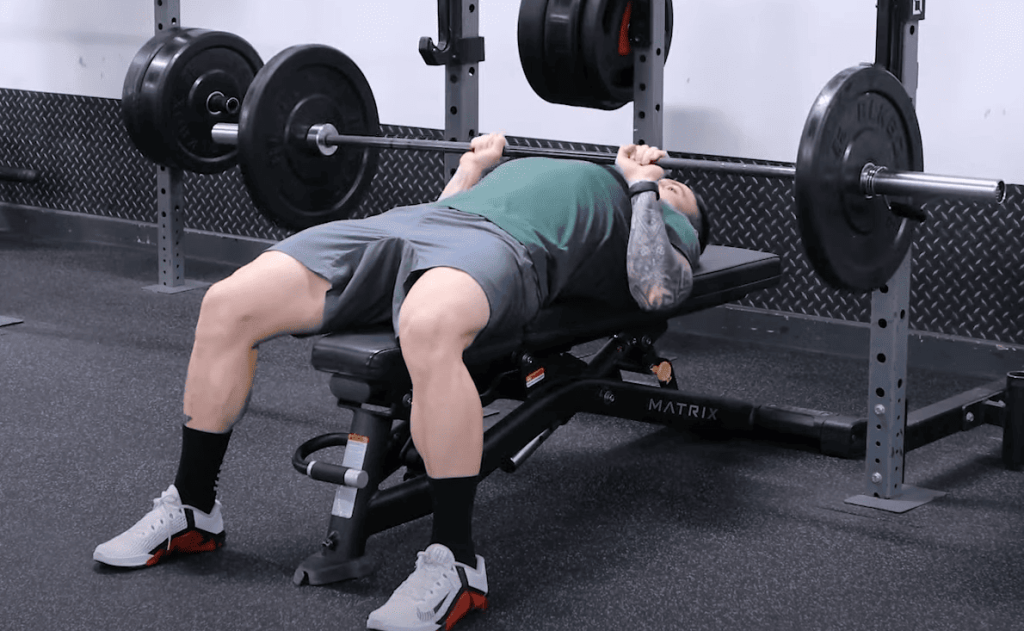
Bodyweight and Machine Variations
Your triceps thrive on creative challenges, whether you’re using jungle gym bars or high-tech equipment. These adaptable methods build arm strength through natural movement patterns while respecting joint limitations.
Parallel Bar Dips: Foundation First
Start with hands shoulder-width apart on parallel bars. Lean forward slightly to emphasize chest involvement, or stay upright for triceps activation. Lower until elbows reach 90 degrees, then drive up explosively.
Beginners can use resistance bands for assistance. Advanced lifters add weight via dip belts. “Progress slowly—depth before load,” advises trainer Marcus Reid. “Rushing causes shoulder strain.”
Ring Dips: Next-Level Control
Gymnastic rings demand stability that boosts core engagement by 28% compared to static bars. Start with partial ranges, gradually increasing depth as strength improves. The unstable surface enhances muscle fiber recruitment throughout the movement.
| Feature | Parallel Bars | Rings |
|---|---|---|
| Stability | High | Low |
| Core Demand | Moderate | High |
| Progression Speed | Faster | Slower |
Pushup Progressions Made Simple
Diamond pushups place hands close together under your chest. Med ball pushups add instability—place one hand on the ball during reps. Narrow-grip versions keep elbows tight to sides for maximum triceps burn.
Machine alternatives like assisted dip stations let you adjust support levels. Chest press units with rotating handles allow neutral grips that reduce wrist strain. Combine 2-3 bodyweight exercises with 1 machine movement per session for balanced development.
Improving Strength and Stability
Building lasting power requires more than just lifting heavier weights—it demands smart progression and body awareness. This section reveals how to amplify results through strategic challenges and foundational support.
Progressive Overload Strategies
Growth happens when you systematically increase demands on your body. Try these methods:
- Add 2.5-5lbs weekly to maintain steady gains
- Boost reps by 1-2 per set before increasing weight
- Use 3-second lowering phases to intensify time under tension
Rotate between weighted dips, resistance band presses, and single-arm variations every 3 weeks. This prevents plateaus while keeping workouts fresh.
| Progression Method | Implementation | Muscle Impact |
|---|---|---|
| Load Increases | Add weight once hitting top rep targets | Boosts maximal strength |
| Tempo Shifts | Extend eccentric phases by 1-2 seconds | Enhances muscle control |
| Stability Demands | Switch to rings or uneven surfaces | Improves joint resilience |
Core Engagement Techniques
Your midsection acts as a power transfer hub. Brace your abs like preparing for a gentle punch to the stomach during lifts. This creates a solid foundation for pushing movements.
Exercises like offset kettlebell presses and med ball pushups force your core to work 18% harder according to recent studies. The extra stabilization strengthens your entire body while protecting the spine.
“Lifters who prioritize core activation reduce lower back injuries by 41% compared to those focusing solely on load.”
Track progress using a simple notebook or app. Note weights, reps, and how exercises feel each week. This data helps adjust your program for continuous improvement.
Common Mistakes and Safety Tips
Perfecting your technique goes beyond lifting heavy—it’s about moving smarter to protect your body while chasing gains. Even small errors can derail progress or lead to injuries. Let’s tackle frequent pitfalls and simple fixes to keep your training safe and effective.
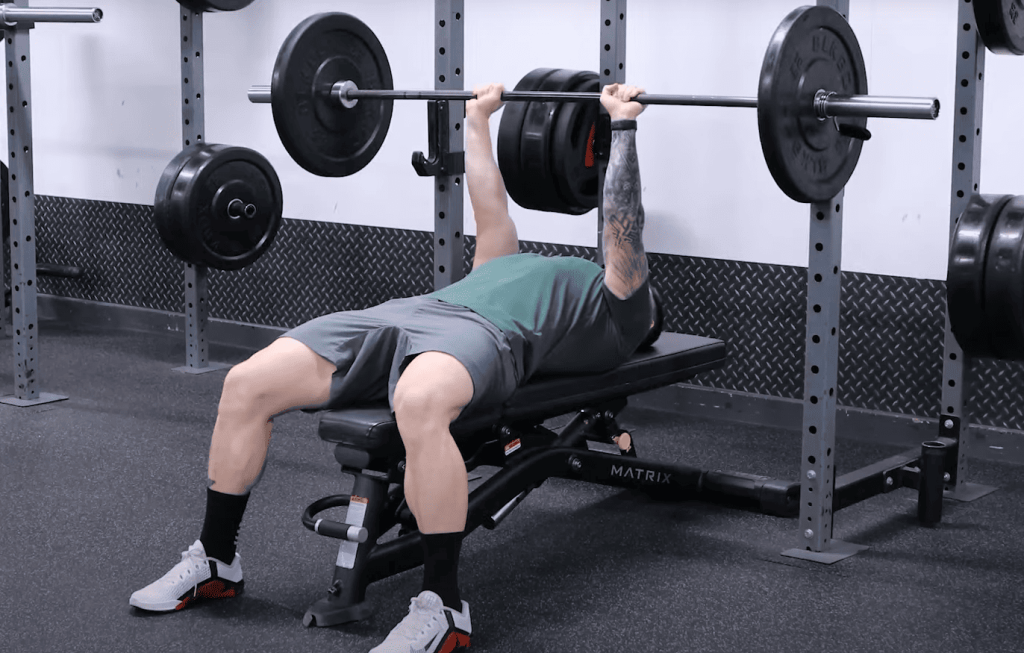
Avoiding Overly Narrow Grips
Hand placement matters more than you think. Squeezing handles too close together shifts stress to wrists and elbows. Aim for a shoulder-width position that lets your forearms stay vertical during lifts.
Research shows extreme inward hand positions increase injury risk by 19% compared to moderate spacing. Test different widths during warm-ups to find your sweet spot.
Maintaining Proper Form Throughout
Keep elbows slightly tucked, not flared, to protect shoulder joints. A 2024 study found lifters who maintained 30-degree elbow angles reduced joint strain by 27%.
Engage your core throughout each rep to prevent arching your back. Controlled movements beat rushed reps—aim for 2-second lowering phases. Track your form using mirrors or video to catch subtle breakdowns.
Remember: Progress shouldn’t come at the cost of pain. If an exercise feels uncomfortable, adjust your grip width or range before pushing heavier loads. Your future self will thank you.

